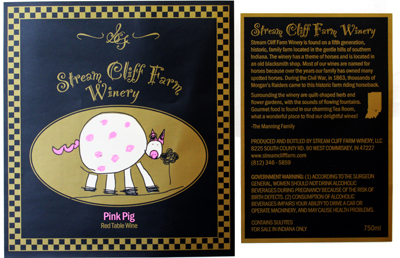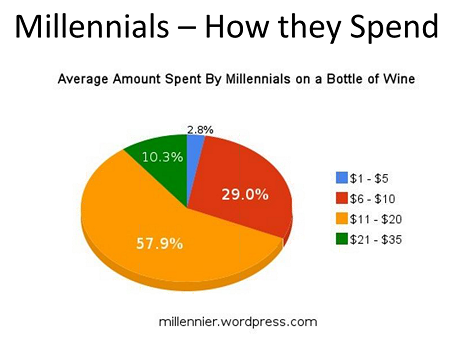The growing popularity of wine in the U.S. has led to an evolution in wine label and packaging design due to a changing drinking population and technological advancements. Over the years, we’ve seen how far custom wine labels have come since the 1980s when we first started printing. Bolder label artwork and unique brand names are just some of the things more of our customers are doing with their labeled wine products to stand out. To help you better understand what’s happening in the wine labels and packaging market, we’ve compiled the most prevalent trends we’ve seen affecting the U.S. wine industry.
Increasing Competition among Wineries
Case volume consumption in the U.S. has shown steady long-term growth over the last 12 years with no signs of slowing down just yet. The increase in wine demand has led to a proliferation of wineries across the U.S. as well as an increase in wine imports and exports. New and established wineries are relying on labels and packaging now more than ever to make their wine stand out and attract customers in diverse markets.
According to statistics from Wines & Vines and The Wine Institute about wineries and wine sales:
- In 2012, there were 7,245 wineries in the U.S. As of June 1, 2013, the number of U.S. wineries reached 7,558.
- Wine sales in the U.S. reached a record high in 2012 with an estimated retail value of $35.6 billion.
- California-produced wine accounts for a 58% share of U.S. wine sales with an estimated retail value of $22 billion.

More Diversity in Wine Label Designs
As the U.S. wine market grows, labels are becoming an essential tool for establishing a brand’s personality and attracting customers. Before the turn of the new millennium, most wine brands were hard to differentiate from one another. Wine labels now feature a variety of design elements not previously seen before such as unique graphics, creative wine names, untraditional label materials (e.g. shrink sleeves), modern artwork, QR codes and more.
Consumers Are More Savvy about Wine
The Internet has made information about wines and brands more readily available than previously before. Consumers are becoming more like connoisseurs thanks to websites, blogs, forums, social media groups, webinars and other online communities that make it easier to learn about wine. Furthermore, images of wine labels are splashed all over the Internet so the quality of the label design is important for creating shelf appeal and brand recognition that extends beyond the grocery aisle. Wineries are also using the power of the Internet to connect directly with consumers and monitor the latest trends so their labels and packaging can be designed to better reach target consumers.

Millennial Wine Drinkers
The millennial generation (typically considered to be between the ages of 18 to 29 or 19 to 34) has been a driving force of change for the wine and label markets as more of them become of drinking age. Wine companies see the buying power that millennials have which is partly why wine labels and packaging are more unique and attention-grabbing these days. In recent years, more wine companies have entered the market to target younger, tech-savvy customers with wine label and packaging designs that are more comical, modern, artistic, etc. than the traditional aesthetic of past decades.
The Wine’s Story is Important to Consumers
With so many brands saturating the market, the story behind the wine has become just as important as the visual appeal of the wine’s label and packaging. Consumers are becoming more judicious with the products they buy and like to know what they’re buying is of good value. The brand or wine’s story helps them make a purchase decision which can possibly lead to brand trust and loyalty in the future.
As you can see, wine labels and packaging hasn’t been immune to the same trends affecting many other consumer product goods. Millennials’ growing buying power, consumers’ concerns about value and the Internet’s influence on brand perception has changed the way wine companies are branding themselves with its labels and packaging. With so many factors to consider, it’s important that a wine company creates labels and packaging that have synergy with its brand and target markets.


